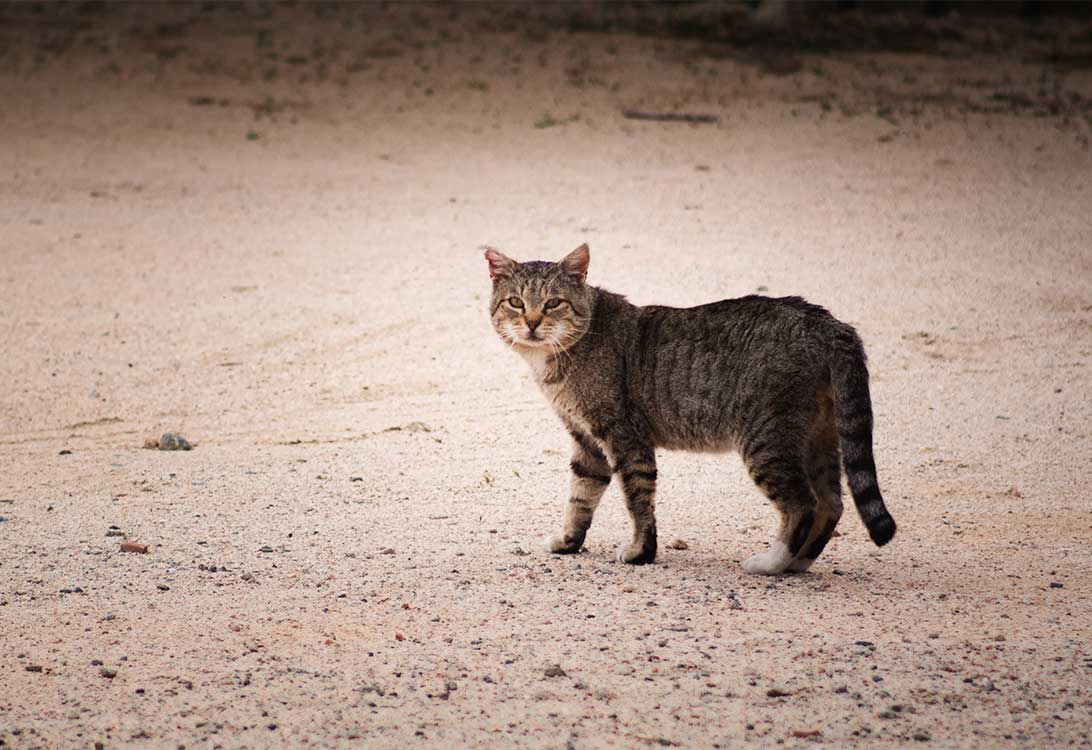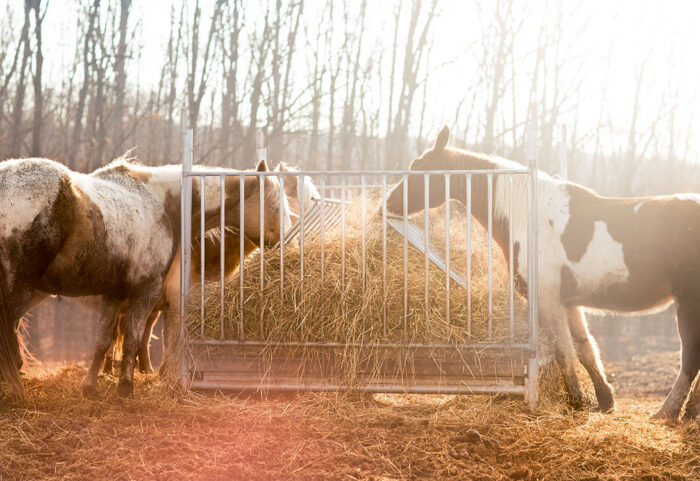What to do if You See a Feral Cat

It’s a question most cat lovers have asked themselves more than once in their lifetimes. For some people, it’s how they ended up with one, two, three cats or more!
Do you know the right way to deal with a feral cat? How about the best way to help it? Let’s talk about your options – and responsibilities – if you see a cat without a home.
Feral Cats vs. Stray Cats
First, let’s talk about the difference in a feral cat versus a cat without a home. A feral cat (i.e. a “wild” cat) is a cat who’s likely too poorly socialized to ever live in a typical home environment. If a cat becomes homeless at a young age, it usually only takes about two years for it to become fully feral. Experts guess there are somewhere north of 60,000,000 feral cats in the United States alone.
Stray cats are a little different. These cats can be runaways, lost cats, or recently abandoned by previous owners. Kittens of feral mothers aren’t necessarily truly feral until they’ve matured, so they can be considered homeless as well. The line between a feral cat and a homeless cat is nebulous.
Is it a Stray or is it Feral?
Unfortunately, feral cats truly live like wild animals and can rarely be “tamed.” Their lifespans are very short, sometimes only a few years. The starkest difference between a feral cat and a stray cat is that a feral will avoid human interaction at all costs. They’re scared of humans and typically do most of their movement at night.
Stray cats, on the other hand, may gradually warm to humans even if they’re skittish at first. Trying to tell whether a cat is stray or feral? Slowly approach it then wait quietly for a few minutes after it inevitably skitters off. A feral cat will stay hidden. A stray will probably approach you to see if you come bearing food or pets. Strays are more likely to live near humans too, such as under porches or in open garages.
How to Help a Stray
See a stray? If you’re able to approach it without incident, see if you can identify a collar. If the cat seems to be non-aggressive and you’re able, do your best to capture it in a crate so you can have a veterinarian check it for a microchip. It could be someone’s long lost best friend!
If the cat isn’t chipped, you have options. If you’re able and willing, talk to your veterinarian about whether or not the cat appears appropriate for indoor living. You’ll need to ensure it’s fully vaccinated and – most important of all – spayed or neutered. Remember that taking a stray into your home isn’t without challenges. It may take time for the cat to get used to you, other pets in your home, or even the concept of indoor living. You’ll want to ensure you microchip the cat in case it goes AWOL.
How to Help Feral Cats
Feral cats are a bit of a different story. There are lots of schools of thought about how to help them, but the clearest-cut way is to ensure they’re spayed and neutered. You can accomplish this by alerting your local animal control if you spot a feral cat or cats. Many communities now have spay/neuter programs in place designed specifically to “fix” feral cats then return them to the wild.
It’s very important you never attempt to pick up a feral cat! Because they are wild, they can be aggressive or even carrying disease. Leave this in the hands of animal control.
Although you may be tempted to feed a feral cat, think twice. Feeding the cat (or cats) will only make it reliant upon that food source; ferals are very good at capturing or scrounging their own food. Another reason not to feed a feral is that you will undoubtedly attract more.
Don’t attempt to “relocate” the cat to somewhere better suited. Something experts call the “vacuum effect” is in place, which essentially means that feral cats always go where the resources are. Whatever drew the feral to your area in the first place will draw more eventually, filling in the “vacuum” the original feral(s) left.
If you can’t bear the thought of doing nothing, talk to your local Humane Society about whether or not it’s appropriate for you to adopt a colony of feral cats. This means just what it sounds like, and it’s a big responsibility. You’ll be volunteering to provide food, clean water, and reasonable outdoor shelter for ferals in your area, and they will become dependent on your help. If you move or can no longer care for the colony, it will be your job to find a replacement.


